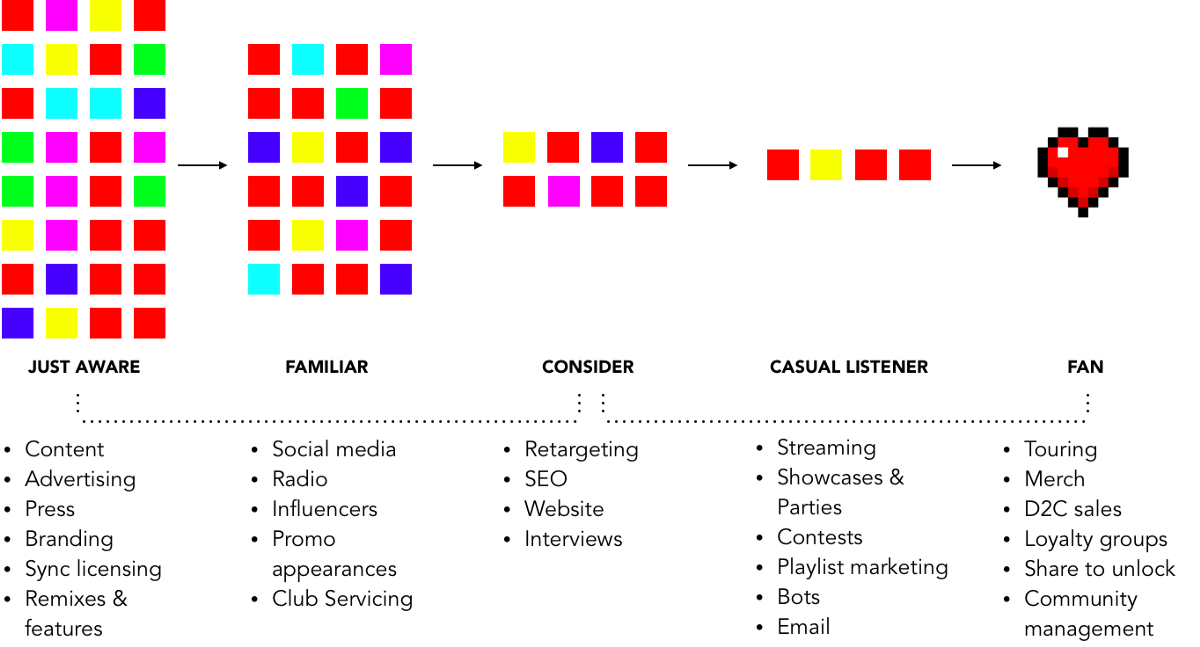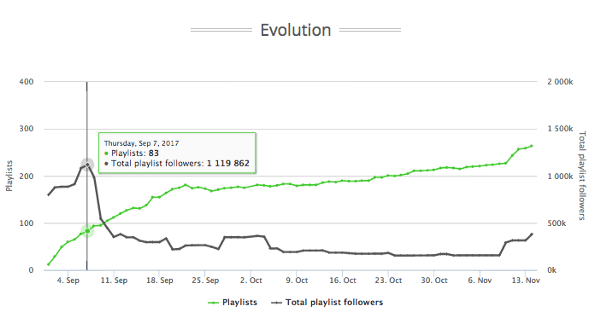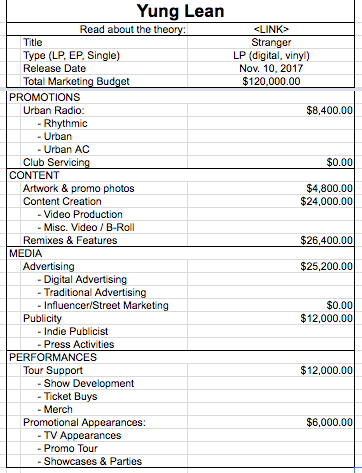Downtown Record’s VP of Strategy Amber Horsburgh runs through how to budget a hip-hop project in this insightful Yung Lean case study.
This post is part II of a 5-part series on fan-first budgeting for music marketing. Here, I outline the nuances in hip-hop consumer behavior and how to breakdown a marketing budget accordingly.
Note: this is not actually Yung Lean’s marketing budget and I have no affiliation with his project, this is purely a illustration of the fan-first budgeting theory.
Read about fan-first budgeting → HERE.
Source: Nielsen Music Mid-Year Report, US 2017
Swedish rapper and king of the sadboys, Yung Lean released his third studio album, Stranger, on November 10 via his own label YEAR0001. With an fan-first approach to marketing and a fictitious starting number of $120,000, this is how to budget a hip-hop project.
The driving factors for hip-hop is audio and video streaming. Hip-hop accounts for the largest share of audio streaming revenue at 30.3% and 26.9% for video. These categories continue to grow having jumped a staggering 64.2% for audio and 5.4% for video since 2016. Consumers prefer singles over albums, as indicated by digital and physical album sales being far below the median consumption level. Therefore hip-hop artists should leverage these growth trends to reach audiences that predominantly care about the bangers (singles).
Content Creation 26%
Artwork & Promo Photos 4%, Content Creation 20%. Source: Fan-First Budgeting Tool
For Yung Lean, a content-heavy campaign (video, social media, features, interviews) will reach new audiences at the just aware, familiar and consideration stages and since hip-hop audiences readily stream video, video content is a smart investment.

Music consumer journey with associated marketing activities at each level.
20% of the budget should be spent on video production, which includes official music videos, teasers, visualizers, and creative marketing ideas. Just one flashy music video would eat his $24,000 entirely and then some so Yung Lean should look for opportunities to partner with applicable YouTube channels, publications and brands that fits his aesthetic to create more ambitious video for the other focus tracks. Targets would include 88 Rising, Apple, Noisey, Spotify, TIDAL, FADER, Mass Appeal, Genius, Arizona, Windows, Pokemon, NorthFace, Stussy, and Salvatore Ferragamo.
Remixes & Features 22%
22% Remixes & Features. Source: Fan-First Budgeting Tool
Remixes and features are tricky. The marketing benefit is that they infiltrate playlists on streaming and radio where the original song doesn’t fit, e.g.: workout, dance, party, indie playlists widening the scope of discovery for new fans. On the other hand, they may entirely contradict the artistic vision of the project. In any case, 22% of the marketing budget should be allocated to remix and features.
Looking at Yung Lean’s single on Spotify, ‘Red Bottom Sky’ peaked at 1.12M total audience and has gradually declined in total follower impressions via playlists (black line). However, the overall playlists adds have increased (green line) showing the track is being added to user playlists with little to no followers, essentially running it’s course sticking only with existing fans.
Yung Lean could pull remixers and feature artists from his label YEAR0001, which would not only promote his own artists and raise brand awareness for the label but also open the ability to target listeners of workout, electronic, dance, focus, and party playlists.
Source: ‘Red Bottom Sky’ Spoton Track, pulled November 14th 2017
Media 31%
21% Advertising, 10% Press. Source: Fan-First Budgeting Tool
A content-heavy campaign needs enough media dollars to ensure it is actually seen. The advertising standard is the 90:10 rule where 90% is spent on media and 10% is the content production costs, but, it is different for the music industry where we have less of a hard message to push, media sources are cheaper, and there’s less barriers to trial.
For music, the more appropriate breakdown is a 60:40 split on content production costs (60%) and media spend (40%), therefore Yung Lean should spend $36,000 on media including press, digital and traditional advertising.
Putting it all together
The last things on the list are radio promotions at 7%, tour support at 10%, and promo appearances at 5%.
US urban radio promotions start at $15,000 so it is not worth spending anything unless (1) success has been achieved online through streaming and video views, (2) there is already artist familiarity at the stations, or (3) the marketing budget exceeds $230,000. If a single starts to stick the budget should be reallocated to try for radio.
Source: Fan-First Budgeting Tool
Depending on the artist’s live business they may need tour support. 10% is adequate for hip-hop artists initially since compelling shows can be achieved with minimal production.
This budgeting tool provides a starting place. The budget should absolutely be reassessed each month to see what is and is not working and funds reallocated accordingly. The fan-first budgeting tool is a way to ensure the fan is always at the center of the marketing plan and budgets are spent smarter.
Last but not least…
Check out more articles from Amber here.




